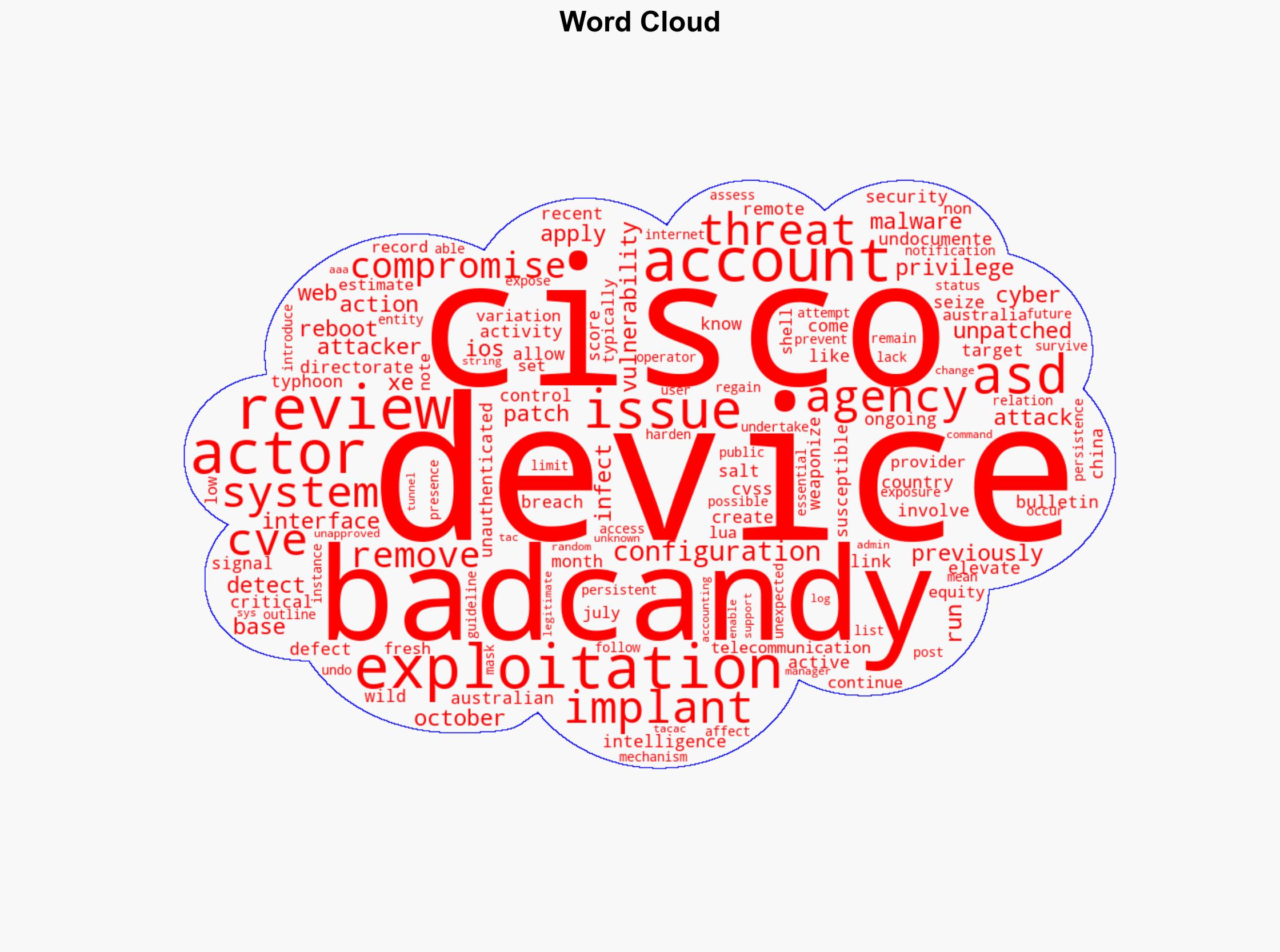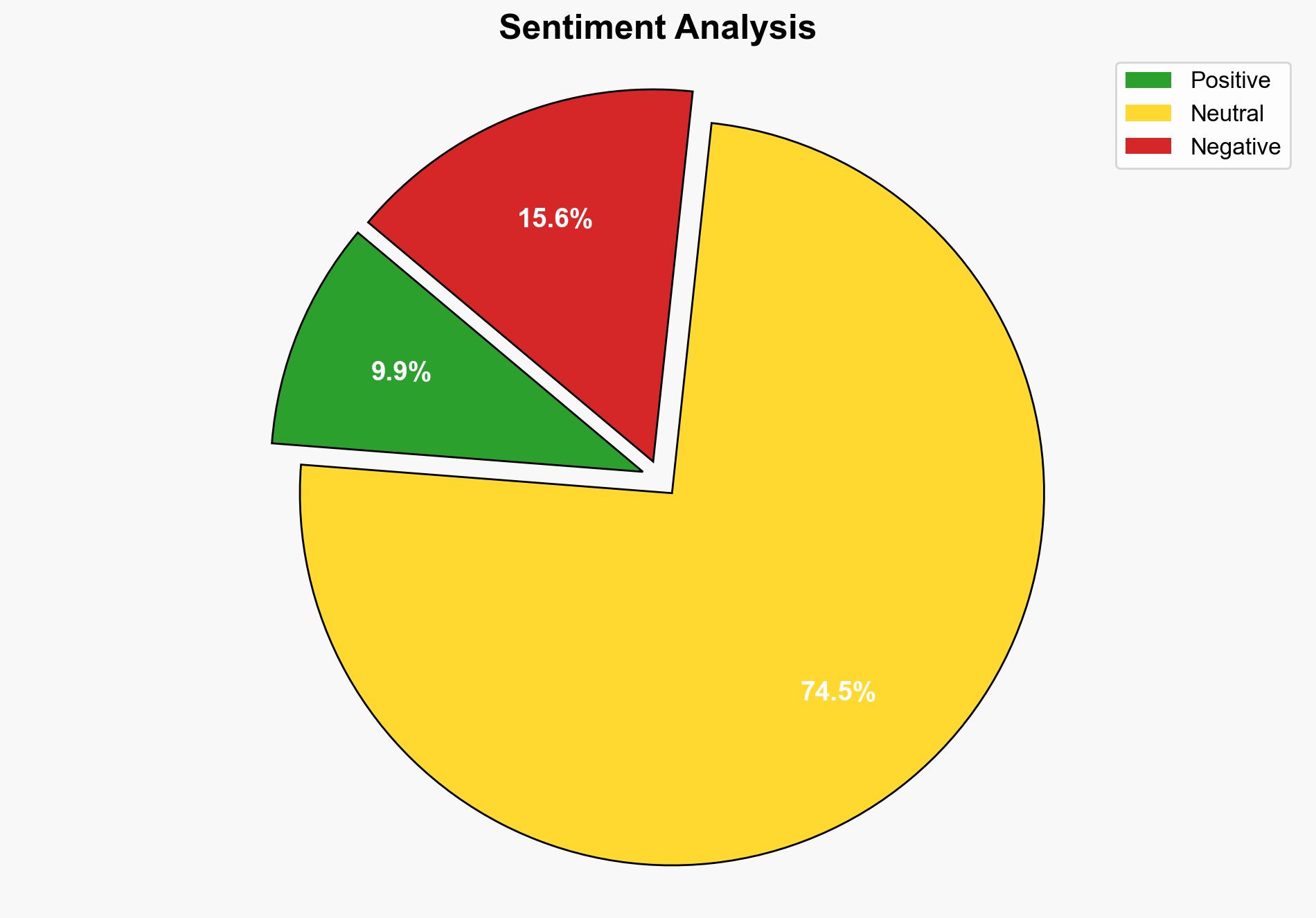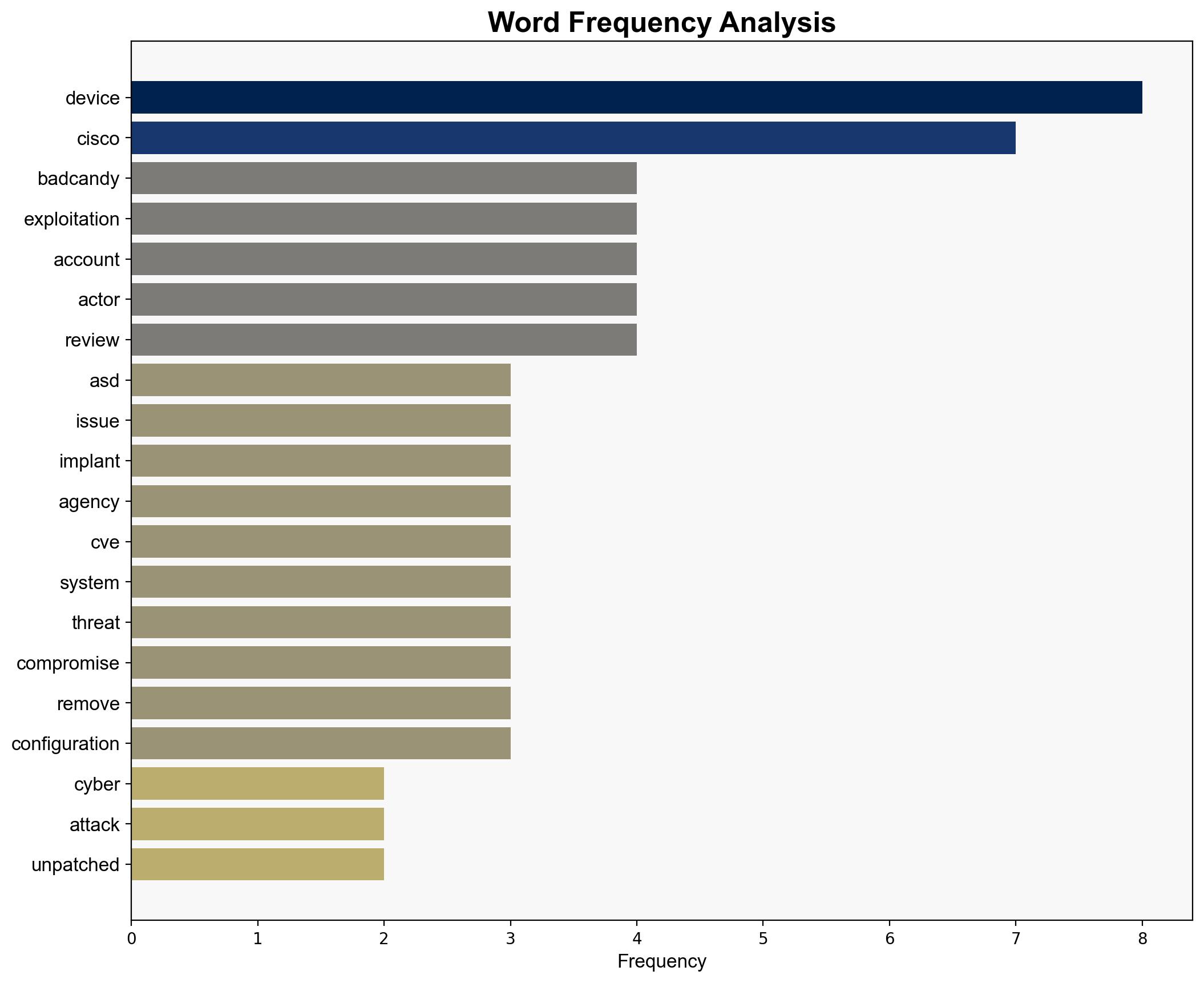ASD Warns of Ongoing BADCANDY Attacks Exploiting Cisco IOS XE Vulnerability – Internet
Published on: 2025-11-01
Intelligence Report: ASD Warns of Ongoing BADCANDY Attacks Exploiting Cisco IOS XE Vulnerability – Internet
1. BLUF (Bottom Line Up Front)
The most supported hypothesis is that the BADCANDY attacks are part of a coordinated effort by China-linked threat actors to exploit vulnerabilities in critical infrastructure, specifically targeting unpatched Cisco IOS XE devices. Confidence level is moderate due to the complexity of attributing cyber operations. Recommended action includes immediate patching of vulnerable systems, enhanced monitoring, and collaboration with international cybersecurity entities to track and mitigate the threat.
2. Competing Hypotheses
1. **Hypothesis A**: The BADCANDY attacks are primarily driven by China-linked threat actors aiming to exploit vulnerabilities in Cisco IOS XE devices for intelligence gathering and potential disruption of telecommunications infrastructure.
2. **Hypothesis B**: The attacks are opportunistic cybercriminal activities exploiting the same vulnerabilities for financial gain, with no direct state sponsorship.
Using ACH 2.0, Hypothesis A is better supported due to the sophistication of the attacks, the specific targeting of telecommunications infrastructure, and historical patterns of state-sponsored cyber activities linked to China. Hypothesis B lacks support as financial motives are not clearly evident in the attack patterns.
3. Key Assumptions and Red Flags
– **Assumptions**: It is assumed that the presence of BADCANDY implants directly correlates with state-sponsored activities. Another assumption is that the lack of persistence in the malware indicates a strategic choice rather than a technical limitation.
– **Red Flags**: The lack of persistence in the malware could indicate either a strategic choice or a limitation, which is not clearly addressed. The attribution to China-linked actors is based on historical patterns, which may not account for potential false flag operations.
4. Implications and Strategic Risks
The exploitation of Cisco IOS XE vulnerabilities poses significant risks to national security, particularly in telecommunications. If unaddressed, these vulnerabilities could lead to widespread disruptions, espionage, and potential leverage in geopolitical conflicts. The ongoing nature of these attacks suggests a persistent threat that could escalate if not mitigated.
5. Recommendations and Outlook
- Immediate patching of all vulnerable Cisco IOS XE devices to prevent further exploitation.
- Enhanced network monitoring to detect and respond to suspicious activities promptly.
- International collaboration to share intelligence and develop coordinated responses to the threat.
- Scenario-based projections:
- Best Case: Rapid patching and international cooperation lead to a significant reduction in successful attacks.
- Worst Case: Continued exploitation leads to major disruptions in telecommunications and critical infrastructure.
- Most Likely: Ongoing cat-and-mouse game with threat actors, requiring sustained vigilance and adaptation.
6. Key Individuals and Entities
Specific individuals are not named in the intelligence. Entities involved include the Australian Signals Directorate and Cisco Systems.
7. Thematic Tags
national security threats, cybersecurity, counter-terrorism, regional focus




